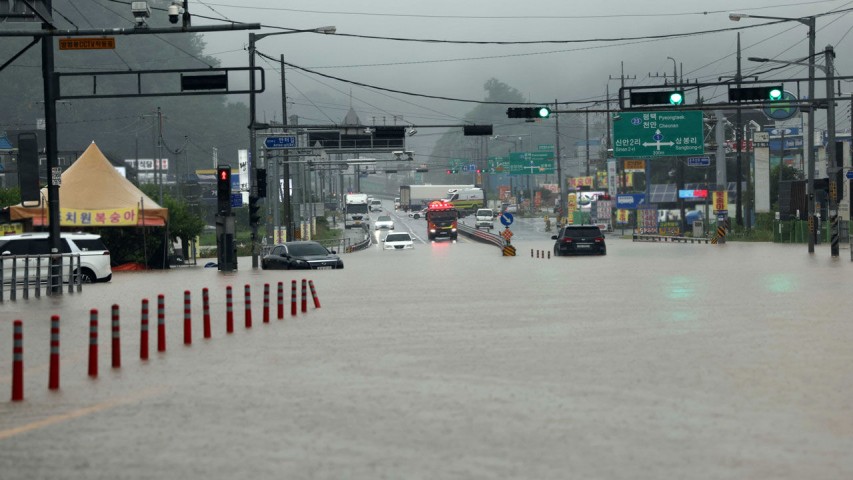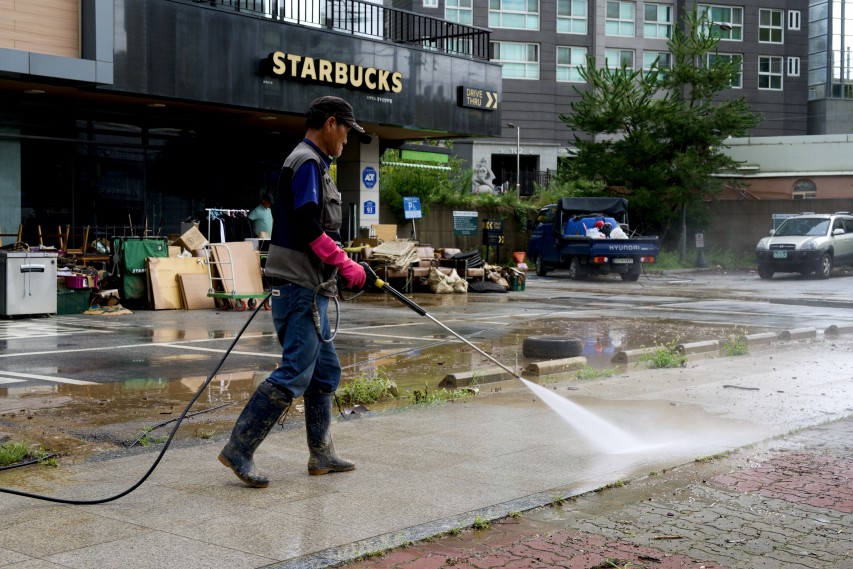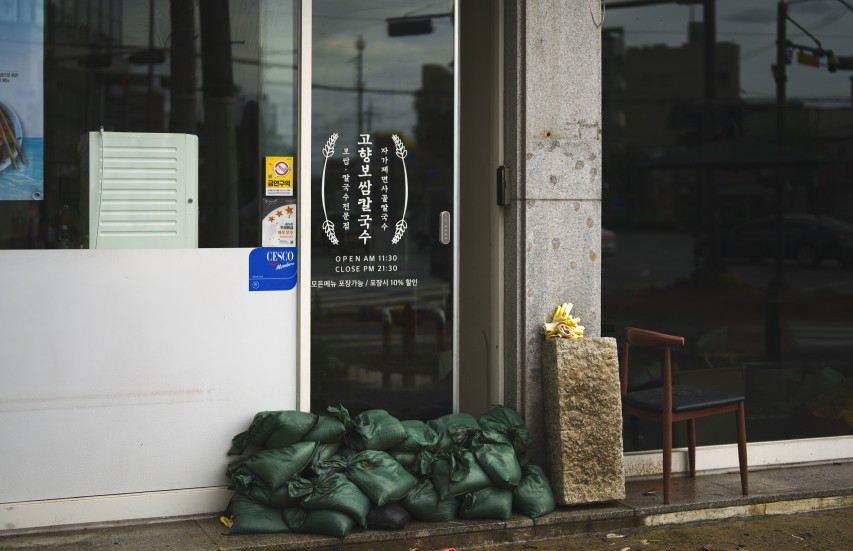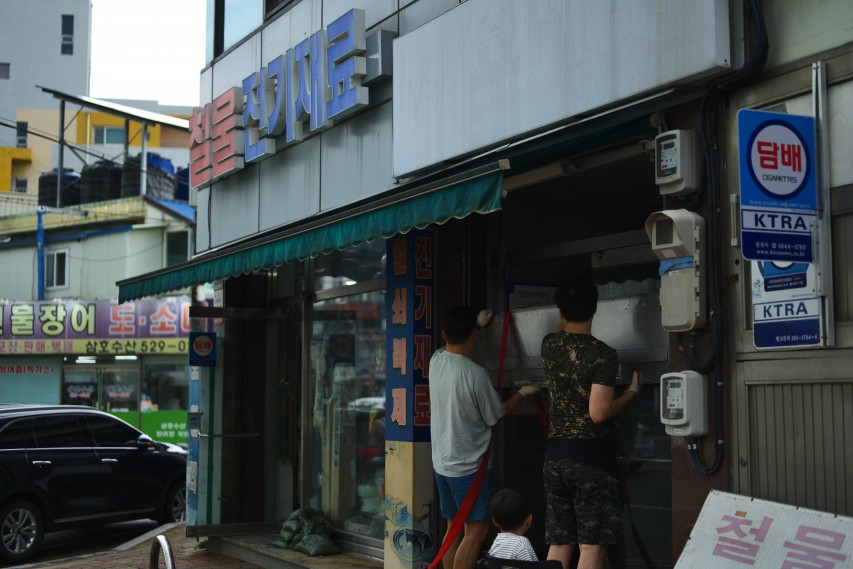[Feature] Heavy Rainfall Sweeps the Nation, Signals Future Climate Risks
During the third week of July, the nationwide heavy downpour damaged various parts of South Korea. Not only the inconvenience in daily life, like road lock or flooding, but also the economic loss and casualty highlight the severity of the incident. This reflects that preparing for prevention is necessary beyond the restoration of the current damage.
The heavy rainfall submerged the roads in Sejong
photo: The Seoul Broadcasting System (news.sbs.co.kr)
Unprecedented Heavy Downpour Strikes Korea, Due to the Heated SST
During the third week of July, a heavy downpour occurred in various parts of the country. According to the Korea Meteorological Administration (KMA), a lot of areas recorded over 80mm of daily precipitation and over 400mm of accumulated precipitation, which are the standards to categorize as heavy downpour. KMA database shows the daily rainfall average for July is 20mm and 400mm for the monthly average, indicating the amount of rainfall was excessive.
Among the nationwide areas, the central and southern regions recorded the most severe rainfall. Seosan in Chungcheongnam-do recorded the highest cumulative rainfall at 519.7 mm, followed by Sancheong with 466.5 mm, Naju with 454.5 mm, and Gwangju with 454.3 mm. Seosan also set a new hourly rainfall record with 114.9 mm.
The KMA attributed this heavy downpour to elevated sea surface temperature (SST). The higher SST increases evaporation at sea, bringing more moisture to the air. In accordance with the National Institute of Fisheries Science, the SST of the West and South Seas is approximately 2 degrees Celsius higher than last year. Then the KMA concluded that this significant difference in SST has resulted in increased rainfall.
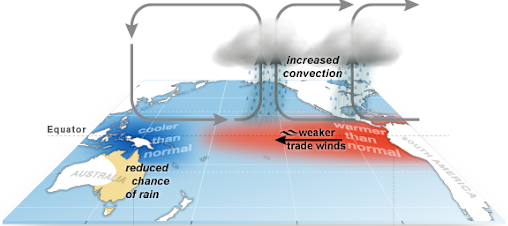
Hotter water caused convection, leading more quantity and frequency of rainfall
photo: The Australian Government of the Bureau of Meteorology (beta.bom.gov.au)
Beyond Daily Disruptions: Lives Lost
This significant rainfall disrupted transportation across the city. According to the Seoul Metropolitan Police Agency, several main roads were banned from use, such as the Majang Ramp to Seongsu Junction and the Dongbu Trunk Road. These restrictions remained in effect until July 20, when the rainfall weakened.
In addition to the road closures, the subway operations were affected. The first subway line suspended service between Pyeongtaek Station and Sinchang Station on July 17. Korail explained that this measure was due to the potential danger caused by the heavy rainfall.
The effects of the rainfall were not limited to Seoul. Korail suspended several train operations, including portions of the Gyeongbu Line—Seoul to Daejeon Station—and the Chungbuk Line—Osong to Gongjeon Station—starting from July 17 until the heavy rain warning ended. During this period, 76 train services had been suspended from partial routes to entire lines.
Additionally, the heavy rainfall caused significant commercial damage through flooding. Gwangju was the most notable place for the incident. The Starbucks Gwangju Sinan DT Branch was submerged, with desks and chairs floating in the floodwater. When the water level reduced, the cafe suspended the operation and hired a cleaning company to prepare for the reopening.
The Starbucks Gwangju Sinan DT Branch suspended operations and hired a cleaning company to remove the debris
The surroundings were more severely affected. On July 19, when the heavy rainfall had weakened, the markets and restaurants in the area had stopped their business and were repairing the damaged sections. A representative of the Shinan Hardware Boiler, a market across from the Starbucks, described the situation, “The water was above my knees. The markets in this area faced this amount of rainfall for the first time ever, and could not prevent the damage from the floodwater. This was unprecedented for us too, even though we have been running the business for 30 years.”
Saehan Tire, the market next to the Starbucks, added to the difficulties for business owners in that area: “The Starbucks is able to pay for a cleaning company, because they have enough budget. However, most of the markets here are individually run, requiring more time and cost to restore their business.”
Hometown Bossam Rice Noodles placed sandbags to prevent the floodwater but was unable to contain the volume, leading to the suspension of operations
The Shinan Hardware Boiler, a family-owned business, is currently repairing the market's damaged facility
The most devastating aspect of the disaster was the human toll it took. According to the Daily Situation Report of the Ministry of the Interior and Safety, the heavy rainfall caused 28 casualties nationwide, including 25 deaths and three people reported missing.
The Rain Has Stopped, but the Risk Remains
This heavy rainfall significantly damaged agricultural and livestock production. According to the Ministry of Agriculture, Food and Rural Affairs (MAFRA), the incident submerged 28,491 hectares of the agricultural land, which is approximately 40% of Seoul’s area. Moreover, the rainfall killed various livestocks, including 1,429 chickens, 139 ducks, 855 pigs, 149 dairy cows, 529 Korean native cattle, and 1,101 bee hives.
The loss from these productions would cause price hikes in certain goods. For example, the Korea Agricultural Marketing Information System announced that the price of a watermelon is 28,639 won for July this year, which is 24% higher than last year’s price of 23,107 won. Adding to the data, MAFRA expressed concern that the price of watermelon would rise rapidly as floodwaters damaged the farming lands. This indicates that the rainfall might affect goods prices, especially for those already experiencing price increases.
Increasing Climate Instability Demands Proactive Preparation
This heavy rainfall appears to be just a sign of future climate events. Professor Kim Hae-dong of Keimyung University explained, “As the amount of greenhouse gas has increased in the atmosphere, extreme weather events are more likely to occur.” He added, “This would result in less rainfall in already dry areas, and more frequent rain in the opposite regions.”
Prof. Kim also pointed to the need for reconsidering city development structures. He said, “The heavy rainfall—one of the extreme weather events—has become more frequent recently, and the cities nationwide were not designed to withstand such an extreme rate of rainfall.” He added, “Areas like Gangnam, with dense population and commercial facilities, are more likely to face higher risks, as the weather events increasingly occur in concentrated areas with extreme intensity.”
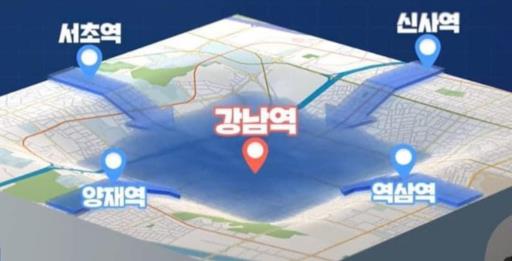
Gangnam is a vulnerable area to the heavy rainfall
photo: Munhwa Broadcasting Corporation (imbc.com)
Heavy rainfall has struck South Korea, causing significant damage, inconvenience, and raising financial concerns. While attention currently focuses on short-term impacts, experts warn that this event may signal more extreme climate incidents ahead. Long-term, proactive preparation seems necessary to prevent devastating consequences from future climate-related disasters.
There are no registered comments.
I agree to the collection of personal information. [view]


